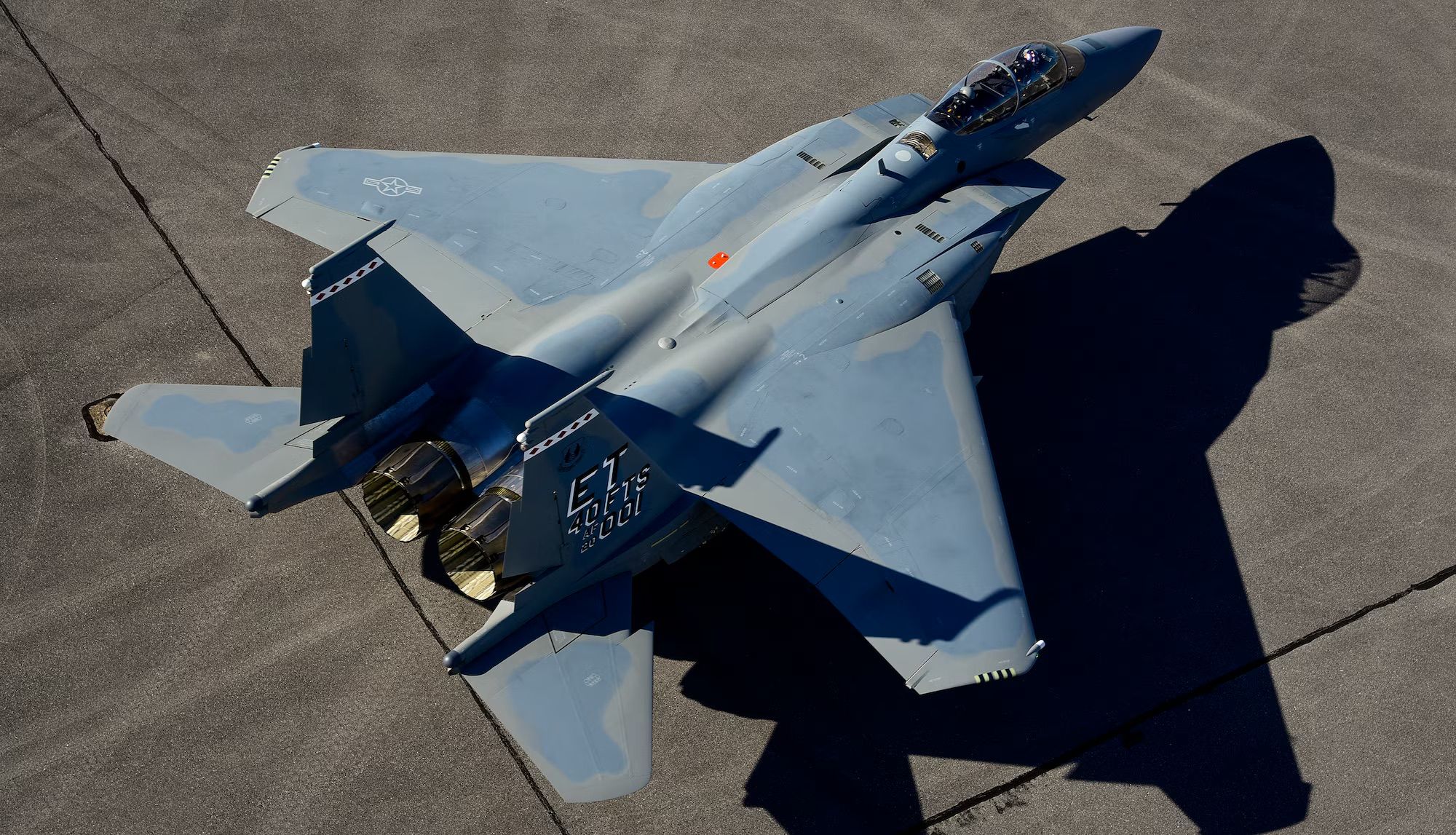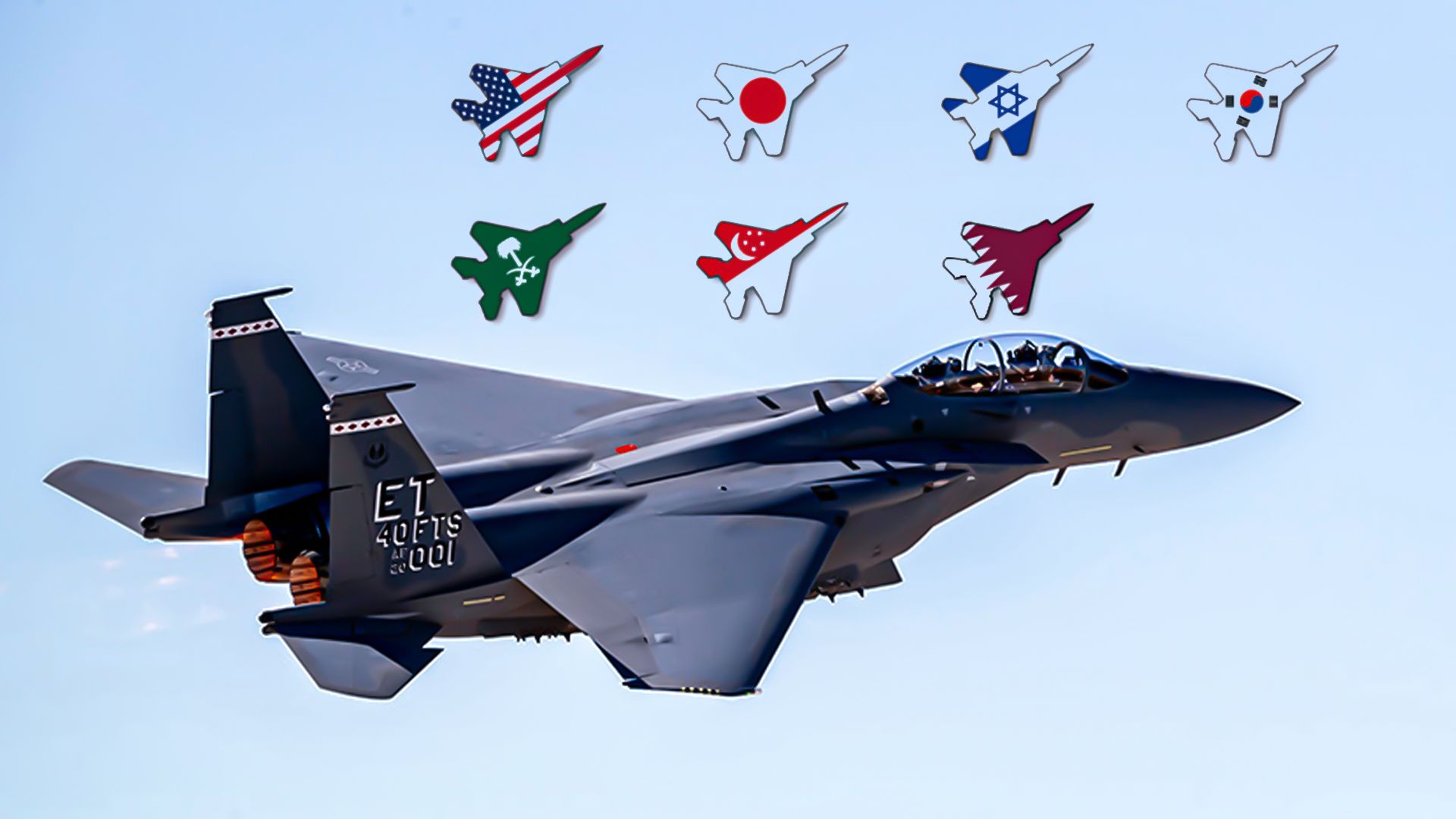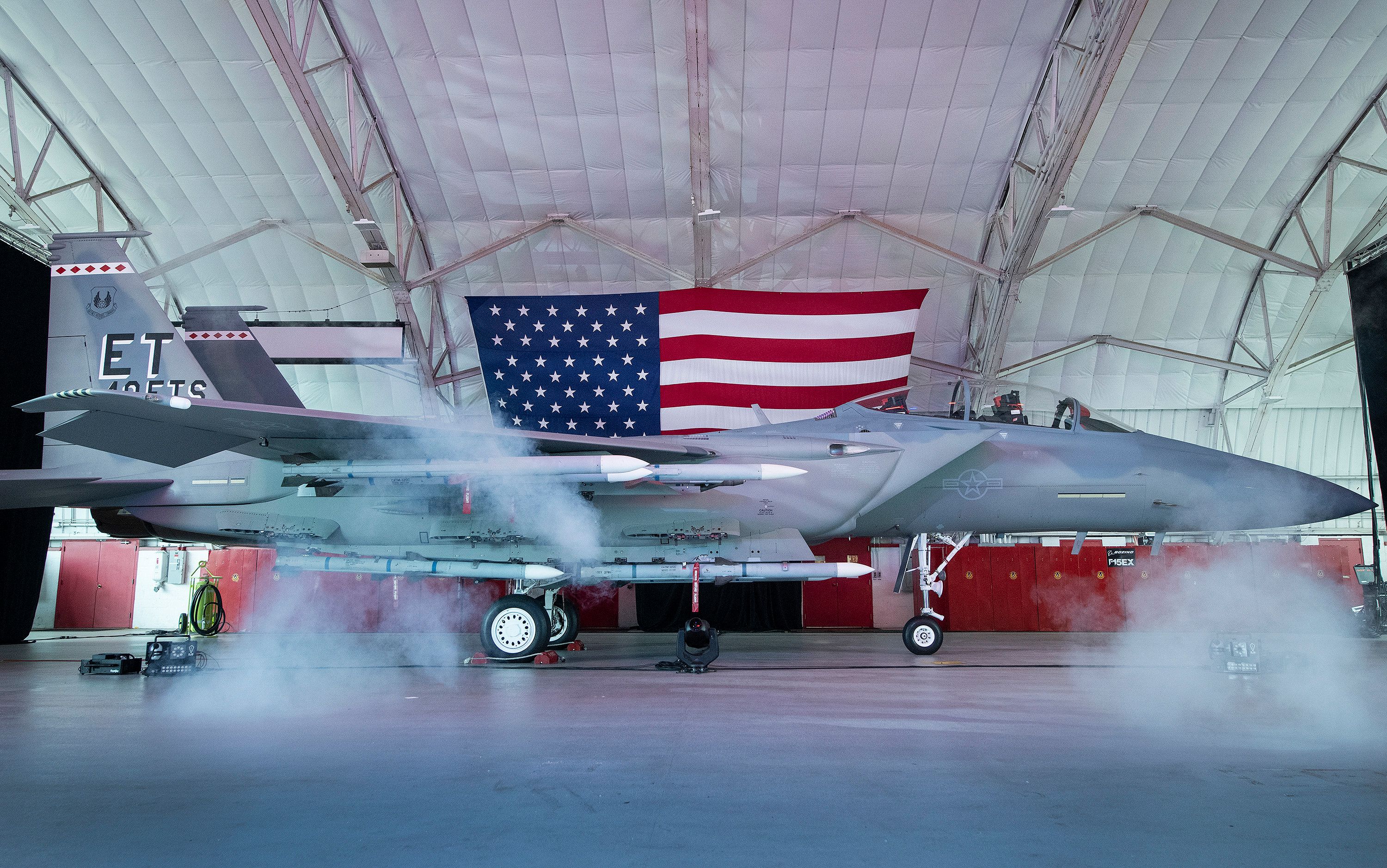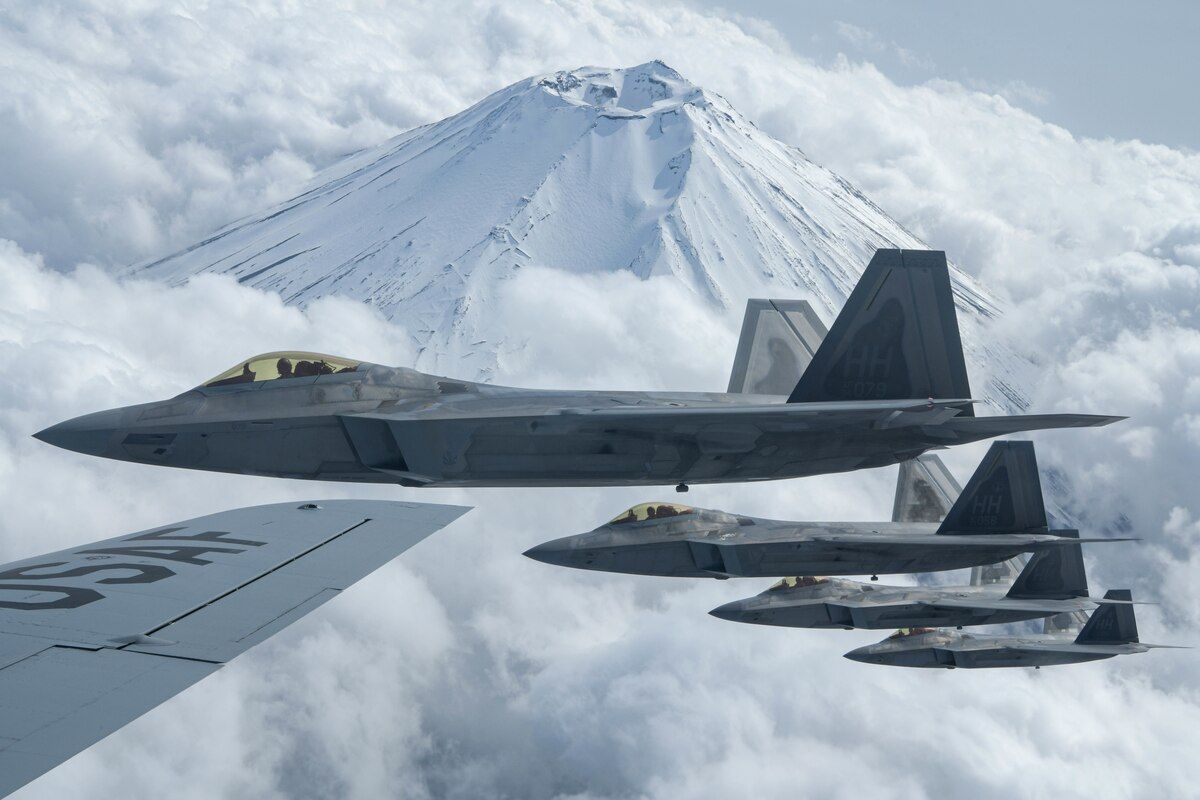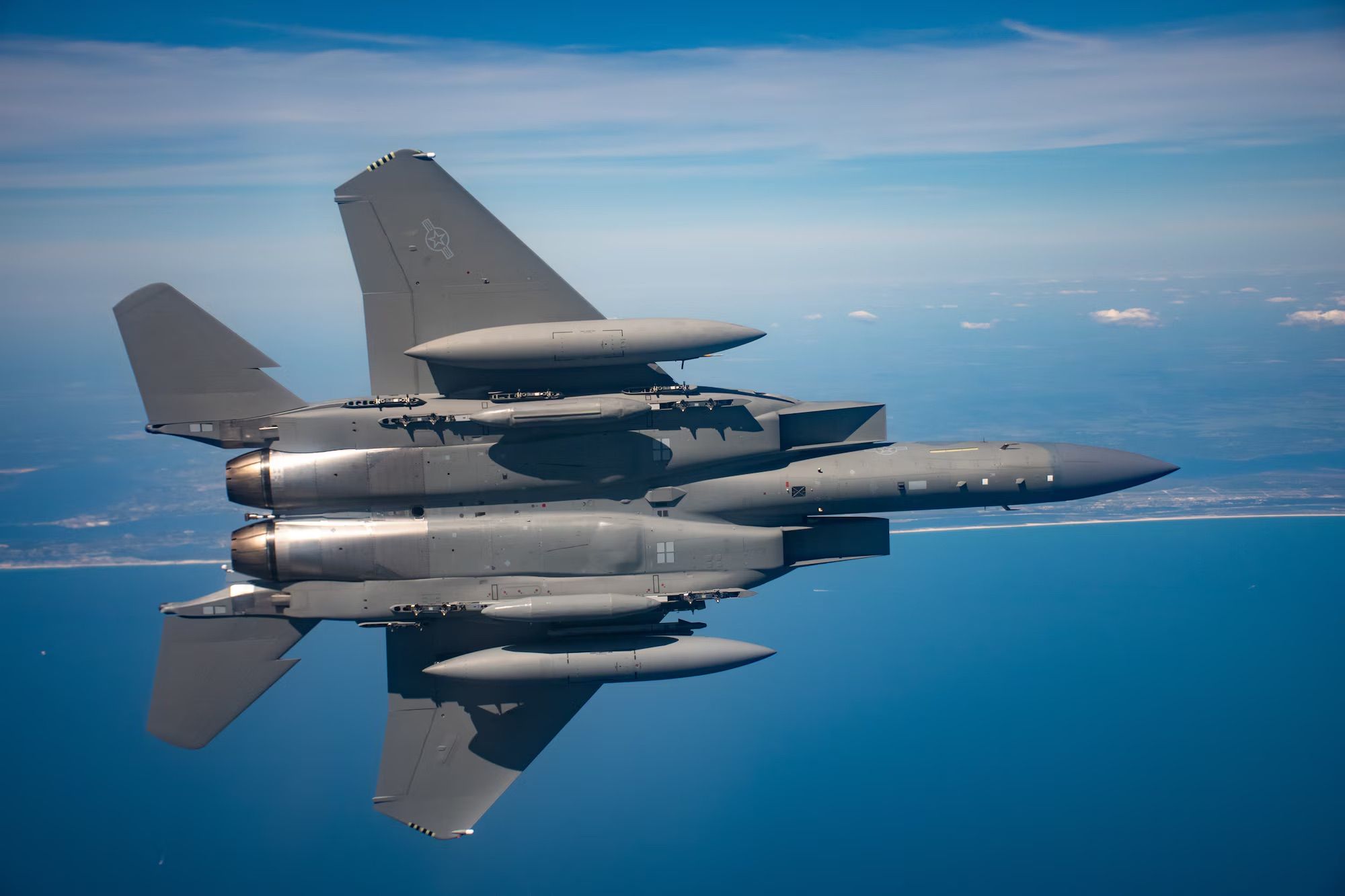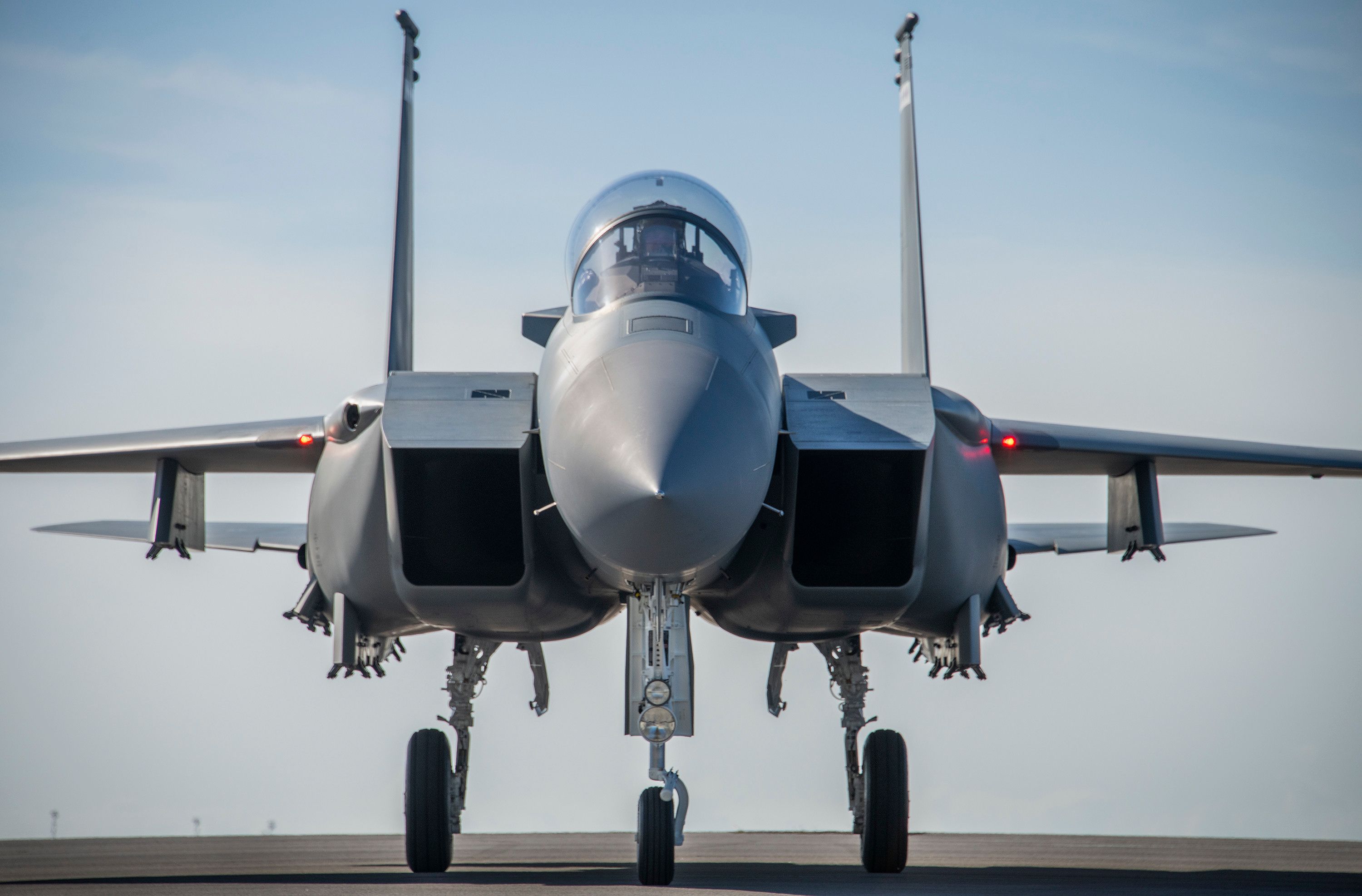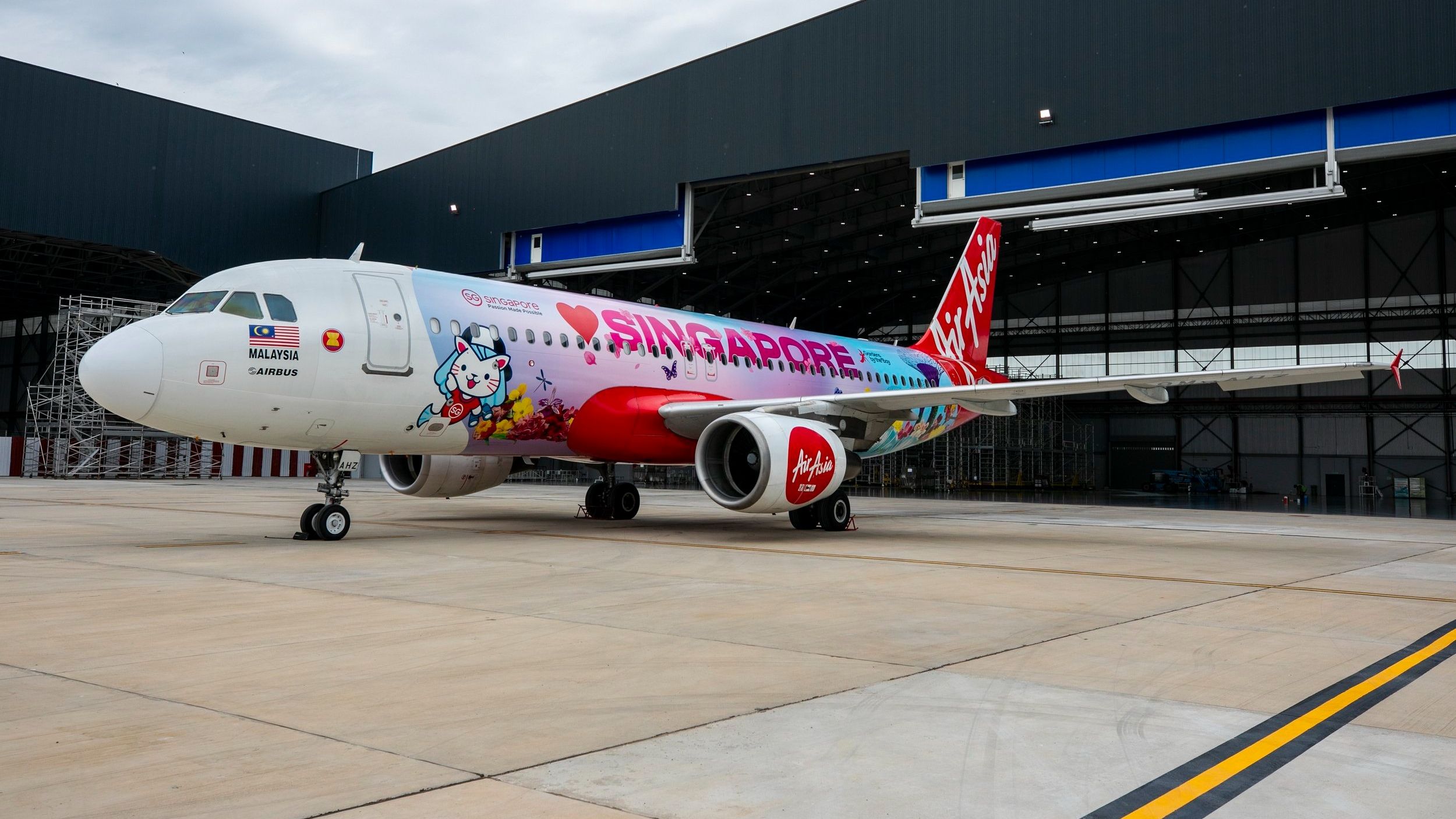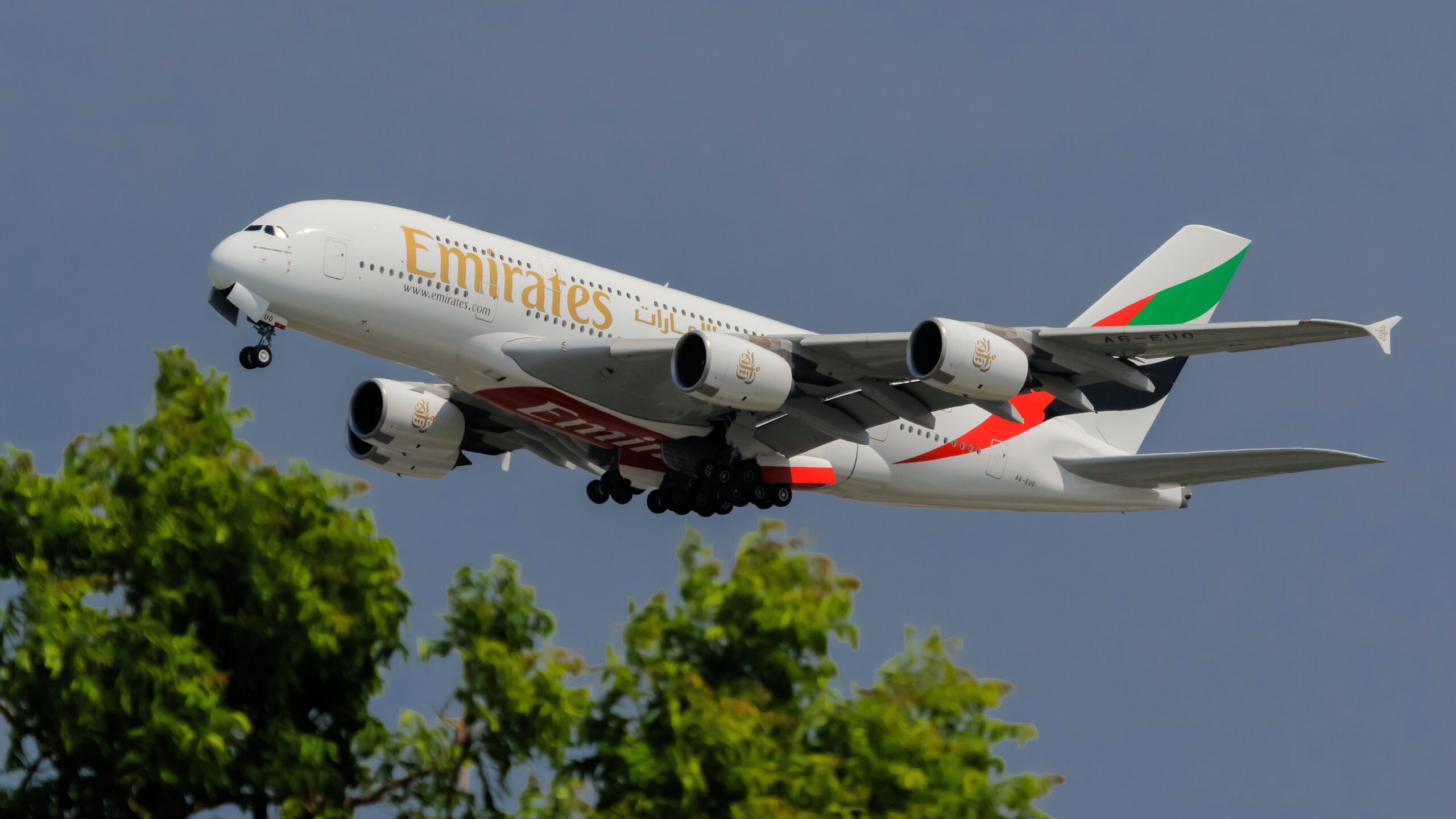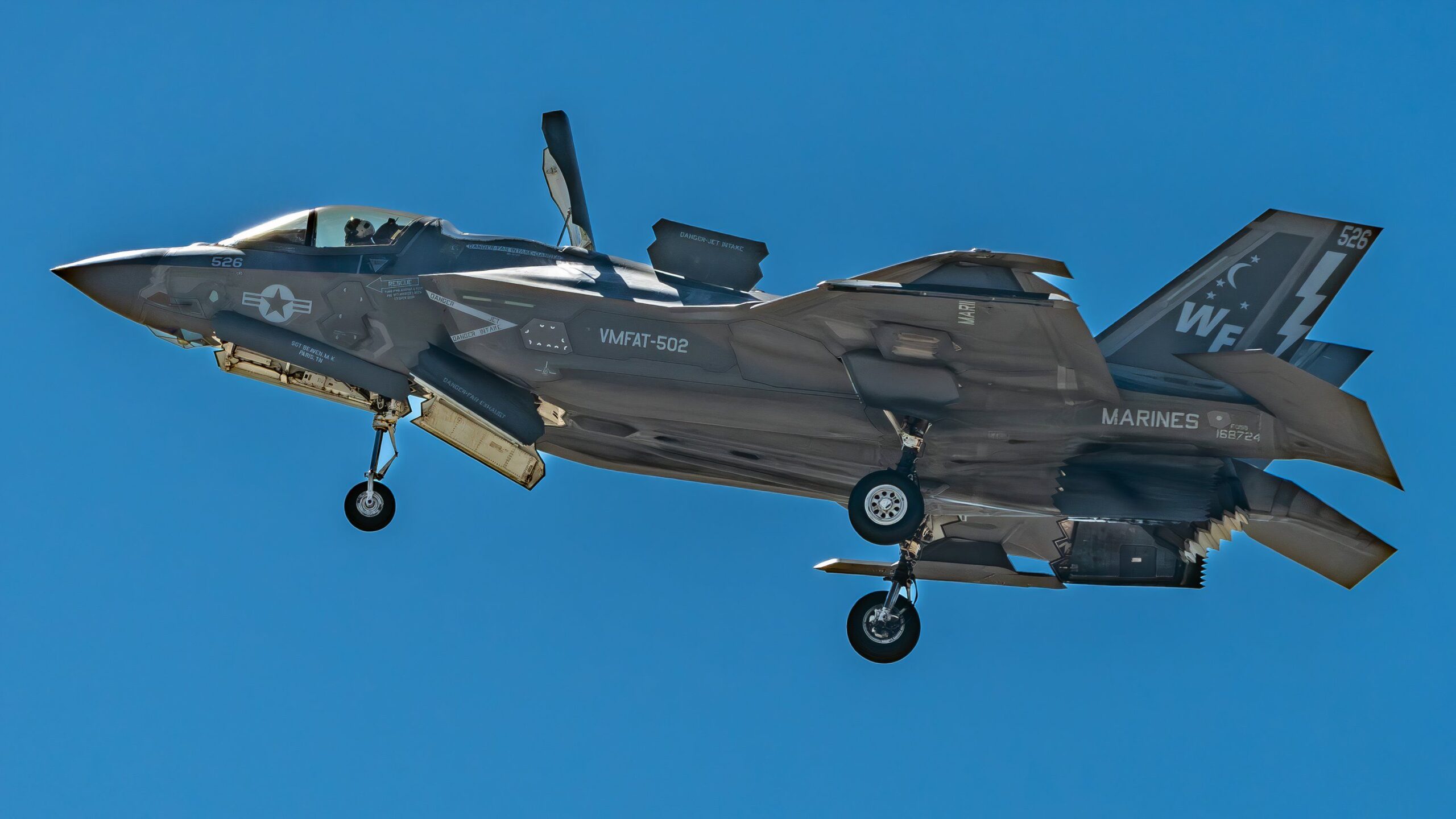With its unparalleled combination of power, versatility, and cutting-edge technology, the Boeing F-15EX Eagle II fighter jet has caught the attention of military agencies worldwide. Building on the wildly successful platform of the original F-15 Eagle and its undefeated air-to-air combat record of 104-0, the F-15EX Eagle II combines a legacy of air dominance with cutting-edge technology, offering unmatched capabilities that include:
- Unmatched Payload and Range: With a payload capacity of 29,500 lbs., it can carry larger and outsized weapons, posing significant challenges to adversaries.
- Advanced Survivability: The F-15EX incorporates innovative electronic warfare tools that maintain low detectability without sacrificing payload.
- Modern Infrastructure: Equipped with next-generation radars, sensors, and networking capabilities, it supports rapid software development and digital engineering.
- Affordability and Reliability: It offers a cost-effective solution with lower operating costs compared to other fighters, providing high weapons payload and fuel efficiency.
- Allied Interoperability: Designed for joint force operations, it enhances maneuverability, range, and lethality, fostering cooperation among global allies.
Recent updates highlight its growing impact, including first flights, U.S. defense forces integration, and continued operational testing advancements. So, without further ado, let’s take a look at seven nations looking to get their hands on the F-15EX.
Photo: USAF
1
The United States
The US Air Force gets first dibs
It comes as no surprise that the U.S. will be first in line to purchase the F-15EX. Initially, the USAF planned to purchase 144 F-15EX aircraft, but budget cuts dropped that number to 104, and, most recently, down to 98. The first of six F-15EXs landed at Eglin Air Force Base on March 11, 2024. Brig. Gen. Scott Cain, 96th Test Wing commander, had this to say about the exciting arrival of its first F-15 EX.
“It’s a special day for the base and our mission. We’re very proud to be part of the next evolution of this historic aircraft. I look forward to seeing this unique test collaboration prepare the F-15EX for the warfighter.” – Brig. Gen. Scott Cain
Photo: USAF
2
Japan
Turning F-15Js into Super Interceptors
The USAF and Boeing have agreed to upgrade Japan’s F-15J fighters into F-15 Japan Super Interceptors, an F-15EX variant with the F-15JSI designation. The upgrade incorporates advanced sensors and avionics in collaboration with Mitsubishi Heavy Industries.
The F-15JSI is more than an upgrade; it represents a complete overhaul, integrating cutting-edge technologies, including touch displays, advanced sensors, radar, electronic warfare systems, and a large weapons payload designed for modern threats. The F-15’s ability to carry extensive weaponry and operate at high speed and long range makes it crucial for addressing security challenges in the Indo-Pacific region, ensuring regional stability and interoperability with allied forces. Since 1978, Japan has trusted the F-15 for its speed, range, and payload, with the F-15JSI poised to maintain its strategic significance in the 21st century.
3
Israel
Introducing the F-15IA: Israel’s advanced F-15
Israel has long relied on the superiority of the F-15 series for air supremacy. In 2023, the Israeli Air Force made a significant move by ordering 25 F-15EXs, which will carry an F-15IA designation (Israel Advanced). In 2024, Israel increased the order to 50 F-15IAs. Furthermore, plans are in place to upgrade 25 existing F-15Is to the F-15IA standard. This move enhances Israel’s tactical edge, underscores its commitment to maintaining regional air superiority, and strengthens its defense partnership with the United States. An official statement from the U.S. Defense Security Cooperation Agency (USDCA) lauded these developments.
“The United States is committed to the security of Israel, and it is vital to U.S. national interests to assist Israel to develop and maintain a strong and ready self-defense capability. This proposed sale is consistent with those objectives.”- USDSCA
4
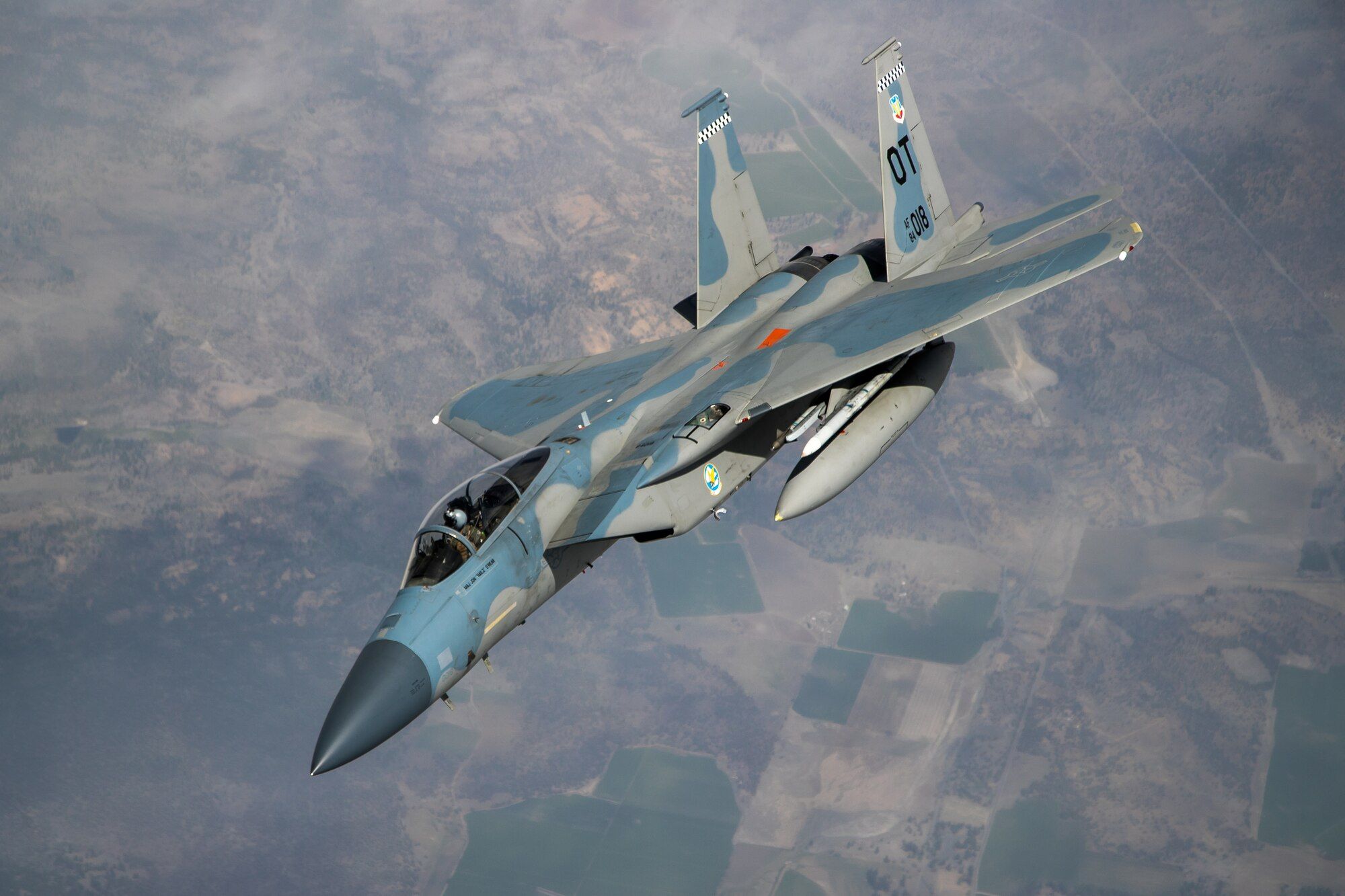 South Korea
South Korea
Turning South Korea’s Slam Eagles into Eagle IIs
Boeing and South Korea’s Ministry of Defense are finalizing an F-15K modernization plan incorporating elements from the next-gen F-15EX “Eagle II.” Approved in late 2023, this $2.6 billion project will run from 2024 to 2034 to upgrade the Republic of Korea Air Force’s F-15K fleet.
Key upgrades include:
- Replacing the AN/APG-63(V)1 radar with the advanced AN/APG-82 for better detection and multi-target capability.
- Installing BAE Systems’ AN/ALQ-250 EPAWSS for enhanced situational awareness and threat protection.
- Modernizing the cockpit with a Large Area Display for improved visibility.
An analysis by the Korea Institute for Defense Analyses suggested replacing the aircraft’s entire front fuselage rather than just parts, maintaining the rear structure due to its good condition. Post-upgrade, over 50 F-15K Slam Eagles will boast capabilities akin to the F-15EX, ensuring they remain at the cutting edge of military aviation technology.
Photo: USAF
5
Saudi Arabia
Can the F-15EX beat out the Rafale and Typhoon?
Saudi Arabia’s interest in the F-15EX marks a continuation of its longstanding relationship with Boeing, dating back to the procurement of 84 F-15SAs (Saudi Advanced) in 2011. During the 2024 World Defense Show in Riyadh, discussions centered on the possible purchase of 54 F-15EXs. Since the Royal Saudi Air Force (RSAF) already operates advanced F-15SAs and upgraded F-15SRs, Boeing emphasizes the F-15EX’s compatibility with Saudi Arabia’s current F-15 fleet, boasting 95% commonality in infrastructure, training, and pilot skills. If the deal is finalized, it will involve upgrading Saudi Arabia’s existing fleet of F-15SAs to match the latest EX standard.
Saudi Arabia is evaluating multiple fighter options for the first time, considering not only the F-15EX but also the Rafale and Typhoon. While the Rafale and Typhoon negotiations are ongoing, the F-15EX stands out for its proven capability in Saudi service, long endurance, and heavy payload, which are crucial for counter-air patrols and intercept missions. Saudi Arabia’s choice between the F-15EX, Typhoon, and Rafale comes amid regional tensions and the ongoing need to modernize its military forces.
6
Singapore
Goodbye Skyhawk, hello Eagle II
Boeing has secured a contract with the Government of Singapore to supply 12 F-15SG aircraft, with an option for eight more in the future. These advanced jets, based on the U.S. Air Force’s F-15E Strike Eagle, will replace Singapore’s retired A-4SU Skyhawks. Deliveries are scheduled for 2008 and 2009, enhancing the operational capabilities of the Singapore Armed Forces. In an official statement, Boeing F-15 Program vice president Joe Hoerter lauded the agreement.
“We have been working toward this moment for several years and are excited and honored to provide the people of Singapore with the F-15SG, which will be equipped with the most technologically advanced avionics and weapons systems available.” – Joe Hoerter
Photo: USAF
7
Qatar
A comprehensive fleet upgrade, including pilot training will help ensure regional stability
Boeing, in partnership with the U.S. Air Force and Qatar Emiri Air Force (QEAF), celebrated the rollout of Qatar’s advanced F-15QA fighter jet, a variant of the F-15EX. This event marks a significant enhancement in military capability and highlights the strengthened partnership between the U.S. and Qatar, essential for regional stability and security. The F-15QA incorporates next-generation technologies such as fly-by-wire controls and an all-glass cockpit, offering unparalleled speed, range, and payload capabilities. Boeing is providing comprehensive support, including pilot training and logistics, and will establish a training center at Al Udeid Air Base through 2024, ensuring the QEAF is mission-ready.
Other nations interested in acquiring variants of Boeing’s F-15EX include:
- Egypt: Despite what U.S. Central Command General Frank McKenzie described as “a long, hard slog” to reach an agreement, the Egyptian Air Force may enhance its fleet with the acquisition of F-15EXs similar to those configured for Saudi Arabia. The news was revealed by the General during a session of the Senate Armed Services Committee in Washington, DC, in March 2022. This move is part of Egypt’s broader effort to modernize its air force, transitioning from older Western and Soviet-era aircraft to more advanced models. The sale would also strengthen a key U.S. ally in the region.
- Indonesia: The Indonesian Air Force currently operates a mix of combat aircraft, including Lockheed-made F-16s and Russian Sukhoi Su-27/30 Flankers, but aims to expand its fleet by acquiring F-15EXs. In August 2023, The Republic of Indonesia and Boeing committed to finalizing the sale of 24 F-15EX (F-15ID) aircraft, along with related equipment and comprehensive support and training packages. The agreement was announced during Indonesian Minister of Defense Prabowo Subianto’s visit to the U.S., where a Memorandum of Understanding was signed by Air Vice Marshal Yusuf Jauhari and Boeing’s Mark Sears at Boeing’s St. Louis facility.
- Poland: Boeing is actively promoting the F-15EX Eagle II to Poland as part of a potential U.S. Department of Defense Foreign Military Sales program. This initiative was announced at the 2023 MSPO International Defense Industry Exhibition, highlighting Poland’s commitment to enhancing its military strength. Boeing’s pitch emphasizes its longstanding presence in Poland, with significant investments and collaborations with local industry and communities, underlining a commitment to innovation, sustainability, and growth.
- Thailand: Thailand’s Royal Thai Air Force is actively seeking multirole fighters to replace its aging F-16A/Bs and initially planned to acquire the F-35 Lightning IIs. However, citing concerns over infrastructure facilities for F-35s, including pilot training, maintenance, and airfield security, the U.S. Department of State suggested alternatives such as the F-16 Block 70 and the F-15EX Eagle II fighters. This pivot towards the F-15EX could provide Thailand with a versatile platform that meets both current and future operational requirements, enhancing its ability to respond to regional security challenges.
